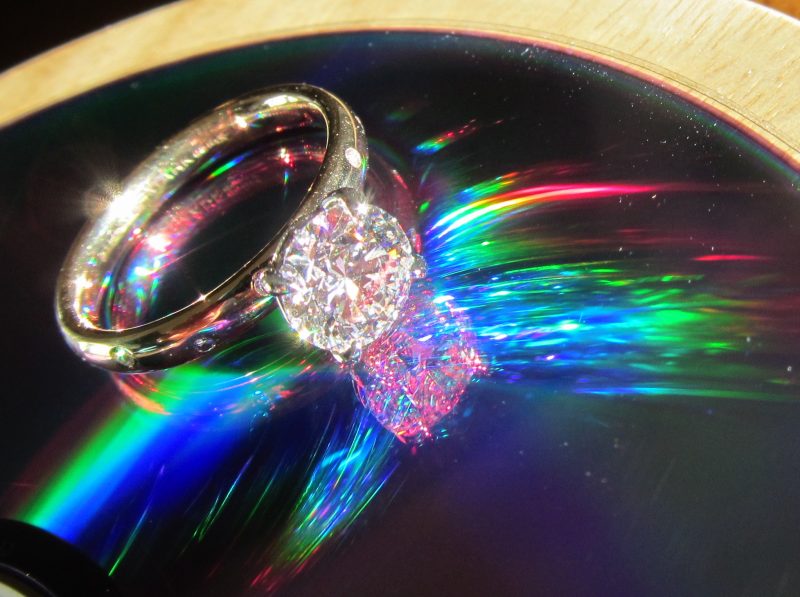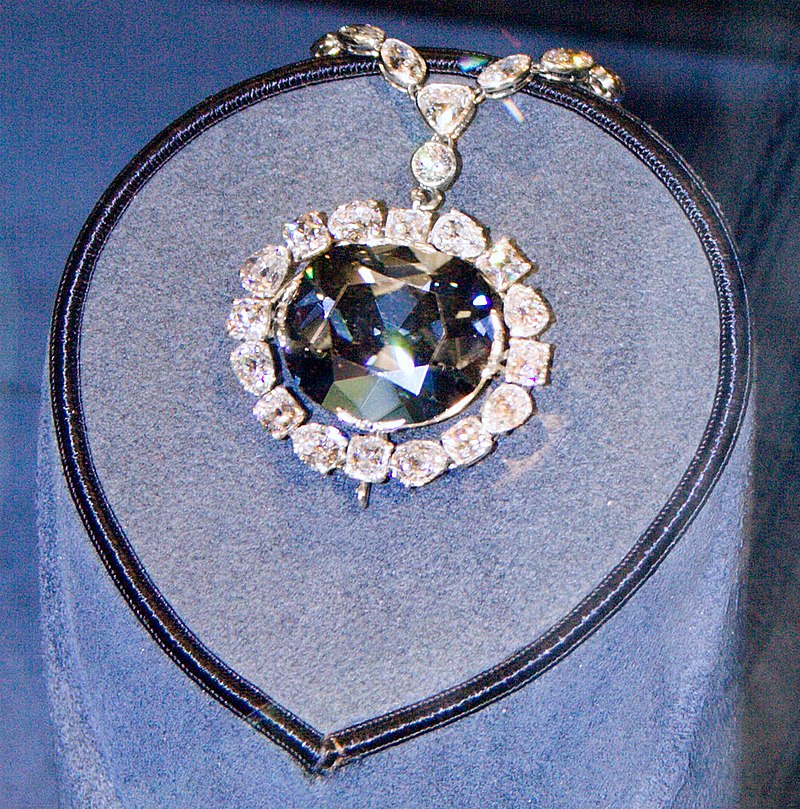
The April birthstone
The April birthstone is the diamond. It’s treasured for its exceptional hardness and purity of color. Although the diamond is not the rarest of gems, it’s still one of the most popular gemstones.
As a result of a diamonds’ cold, sparkling fire, it’s held us spellbound for centuries. What’s more, it’s inspired rich, passionate myths of romance, intrigue, power, greed and magic. Today, the diamond is a symbol of enduring love, and often graces engagement rings.
The science of diamonds
Ancient Hindus, finding diamonds washed out of the ground after thunderstorms, believed bolts of lightning created them.
Of course, we know different now. In fact, diamonds are the rich cousins of graphite. Both are crystalline forms of pure carbon. But the enormous differences in their properties are a result of the way the carbon atoms bond together. In graphite, carbon atoms form in sheets that easily slide past each other, which makes graphite ideal as a lubricant and, of course, as pencil lead. On the other hand, diamond crystals are a tight-fisted network of carbon atoms securely bound in four directions. Thus, making diamonds the hardest naturally-occurring substance in the world.
So to achieve such a compact and strongly-held network of carbon atoms, it’s believed that diamonds crystallized deep under the Earth’s surface. At these depths – 90 to 120 miles deep (145 – 193 km) – the proper conditions for the formation of diamonds exist. That’s because pressures are more than 65,000 times that of the atmosphere at the Earth’s surface, with temperatures exceeding 2,700 degrees Fahrenheit (1,500 degrees Celsius). And as a matter of fact, such pressures and temperatures are reproduced in laboratories successfully creating synthetic diamonds.
Last chance to get a moon phase calendar! Only a few left.
The quality of diamonds
There are many kinds of diamonds: transparent, translucent, or opaque; ranging from colorless to sooty black, with many colors in between. Mostly transparent diamonds, those that are colorless or tinted, end up in jewelry. And then lower grade diamonds are for industrial use.
The color of a diamond depends on the kind of impurities embedded inside it. For example, yellow diamonds betray minute quantities of nitrogen, while boron imparts a bluish hue. As a matter of fact, some inclusions in diamonds have great scientific value. That’s because they are time capsules containing valuable information about conditions deep in the Earth’s upper mantle where diamonds form. Additionally, they offer clues to the formation and age of the diamond.
Sources of the April birthstone
Diamonds are found in alluvial deposits or gravel swept away by streams, rivers, glaciers and ocean currents. Also, they are in sedimentary rock where gravel deposits and organic material are compressed into rock. Diamonds are in some samples of kimberlite, a type of volcanic rock first identified in Kimberley, South Africa. Also, the diamonds in kimberlite may be very old, perhaps as much as three billion years old. And even meteorites – bits of rocky space debris that land on Earth – often contain tiny flecks of diamonds.
Diamonds are crystals. Crystals are the ultimate form of symmetry in nature. Their shape reflects the internal orderly arrangement of atoms within the crystal. In diamonds, atoms of carbon are held tightly by covalent bonding, where two neighboring atoms share an electron, endowing the diamond crystal with great strength. But despite that hardness, diamonds can be cut with saws and polished with grinding wheels coated with tiny industrial diamond fragments. In their natural form, diamonds can appear quite unimpressive. But they are cut and polished by skilled craftsmen in a pattern that reflects and refracts the light among their facets to reveal the hidden beauty of the stone.

Diamond lore
Some diamonds seem to have lived lives of their own. One legendary stone in the diamond hall of fame is the Koh-i-noor (“Mountain of Light”). The Koh-i-noor diamond is believed to be 5,000 years old, and was featured in the great Sanskrit epic The Mahabharata.
Originally owned by the Rajah of Malwa in India, the Koh-i-noor has since been a player in victories and defeats spanning India, Persia and Afghanistan. It was in the possession of the great Mogul dynasty from 1526 to 1739. Its owners included Shah Jehan, who built the Taj Mahal in memory of his queen Mumtaz. The Persian invader Nadir Shah briefly possessed it until his assassination in 1747. The jewel then fell into the hands of Afghan rulers who eventually surrendered it to the Rajah of Punjab, Ranjit Singh.
Two years after Ranjit Singh’s death in 1839, Punjab became part of India under British rule and they presented the stone to Queen Victoria. Then she had it cut from its original 187 carats to 108 carats to further enhance its beauty. After her death, the diamond became part of the British crown jewels. Queen Elizabeth (later the Queen Mother) wore it in her crown at her 1937 coronation. By the way, Camilla has indicated she will not wear that crown in the upcoming coronation of Charles III scheduled for May 2023. Instead, Camilla chose another crown to wear at the coronation, one that is without controversy.
Find out about the birthstones for the other months of the year.
January birthstone
February birthstone
March birthstone
May birthstone
June birthstone
July birthstone
August birthstone
September birthstone
October birthstone
November birthstone
December birthstone
Bottom line: The April birthstone is the diamond. It is the hardest of the known gemstones.
The post The April birthstone is the diamond, the hardest known gem first appeared on EarthSky.
0 Commentaires